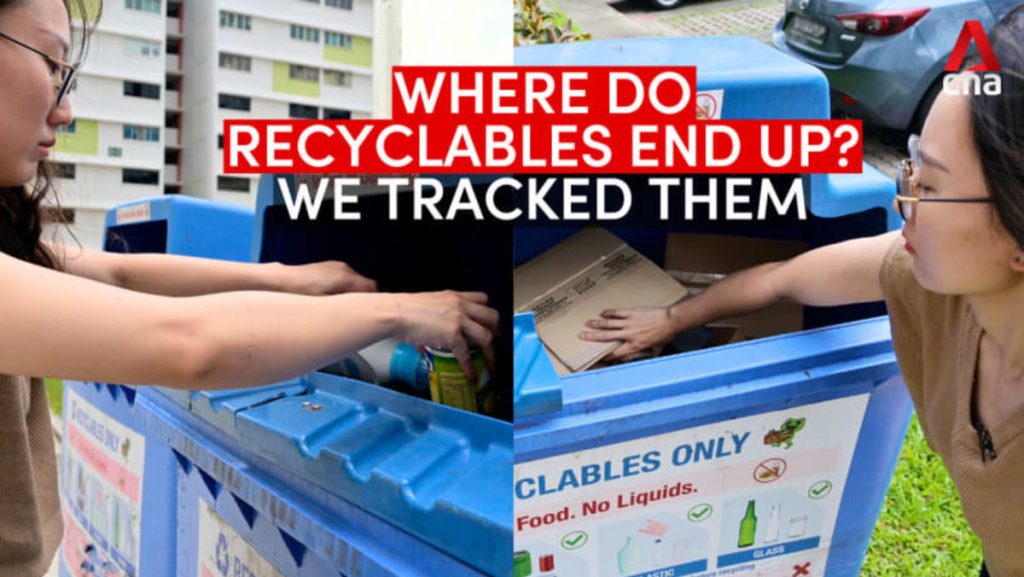After placing 12 tracked recyclable items in blue recycling bins across Singapore, CNA journalist Koh Wan Ting set out to discover where they ended up. The items included glass bottles, paper, and plastic containers, all commonly found in household recycling. By attaching trackers to these items, Wan Ting aimed to follow their journey through the recycling process in Singapore.
The first stop for the tracked recyclables was a sorting facility operated by waste management company Veolia. Here, workers manually sorted through the incoming recyclables to remove any contaminants or non-recyclable items. The items were then separated by type – glass, paper, plastic, etc. – to be sent off for further processing. This step is crucial in ensuring that the recyclables are of high quality and can be effectively recycled.
From the sorting facility, the recyclables were sent to different processing plants based on their material type. Glass bottles were crushed and melted down to create new glass products, while paper and cardboard were pulped and turned into new paper products. Plastic containers were shredded and processed into raw materials for manufacturing new plastic products. These processes help to reduce the demand for virgin materials and conserve natural resources.
Despite the efforts of recycling facilities, not all tracked recyclables were successfully recycled. Some items were diverted to incineration plants or landfill due to contamination or improper sorting. Contamination is a major issue in recycling, as even a small amount of food residue or non-recyclable material can render an entire batch of recyclables unusable. This highlights the importance of educating the public on proper recycling practices to minimize contamination.
Overall, Wan Ting’s experiment revealed the complex and often imperfect nature of the recycling process in Singapore. While recycling is an important aspect of waste management and sustainability, it is not without its challenges. Contamination, inefficient processes, and limited recycling infrastructure can all impact the success of recycling efforts. However, initiatives like tracking recyclables and increasing public awareness can help improve the efficiency and effectiveness of recycling in Singapore.
In conclusion, the journey of recyclables in Singapore is a multi-step process that involves sorting, processing, and remanufacturing various materials to create new products. By tracking 12 recyclable items, Wan Ting was able to shed light on the intricacies of the recycling process and the challenges that come with it. While there is room for improvement in Singapore’s recycling infrastructure, initiatives like education and awareness-raising can help to enhance the sustainability of recycling efforts in the country. Ultimately, recycling remains a crucial part of waste management and conservation efforts, and it is important for individuals to do their part in ensuring that recyclables are properly sorted and recycled.


